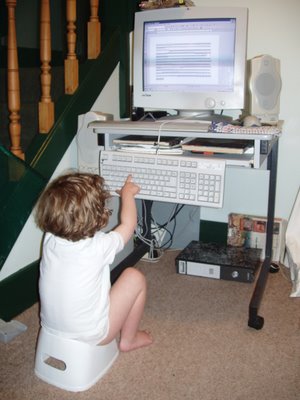I am fascinated by cultural differences. Nearly every funeral I've ever been to the coffin has been coffin shaped (an irregular hexagonal prism), but nearly all the coffins on TV are American caskets which are rectangular boxes. Of course anthropologists have been writing about differences between different cultures funeral customs for a long time. But cultures don't limit themselves to differences in important things - I married into a family who use fluffy (towelling)
tea towels, I come from a family who use flat linen
tea towels, and I have negotiated a compromise of waffle weave tea towels.
I live in a land where a normal washing machine is a top loader and you drag the vacuum cleaner along behind you on little wheels. I've spent a fair amount of time in England where the normal washing machine is a front loader and the normal vacuum cleaner is an upright. When I last bought a washing machine I considered a front loader because they use less energy and water but we ended up buying a fairly
eco-friendly top loader because, well, they are just the way washing machines should be. It amazes and amuses me that humans create such astounding diversity in everything and then culture helps us limit the diversity to manageable proportions.
Even more than appliances I am fascinated by the cultural differences in toilets. I have been meaning to write about this for a while but I didn't have time until I gave up on the all singing, all dancing version with lots of links and pictures of
toilets from all over the world.
In my experience the two most common designs are what I will call the "Deep" and the "Shallow". The Deep is the standard UK, NZ, Australian toilet. The Shallow is the standard American toilet. To me the most distinctive differences between these two designs are the distance between the bottom and the water, the surface area of the water, the visibility of the contents and the way they flush.
When sitting on a Deep toilet there is about a foot between ones naked bottom and the water below. This ensures a loud and satisfying splosh when substances drop from one into the other and that when wiping ones nether regions one is unlikely to get the toilet paper accidentally wet. In contrast a Shallow toilet minimises the distance from bottom to water and the water itself is shallower this reduces the splosh factor, an advantage for those in favour of discrete excretion.
However there is one area where the Deep toilet design leads the Shallow for discreteness. The Shallow toilet has a much larger surface area of water and only a very small amount of the water (if any) is hidden from view whereas much of the water in a Deep toilet out of sight in the S bend. This means that for those of us who come from countries with Deep toilets it is only when we visit countries with Shallow toilets that we realise just how much poo an adult produces. It is amazing! The Deep toilet may loudly announce to anyone in earshot that someone has pooed but only a Shallow toilet allows the
pooer to observe the entire output at their
leisure.
Finally there is the issue of flush, when a Shallow toilet flushes the bowl is entirely emptied. This may seem like a piece of excellence in toilet design and it is what makes the stereotypical American traveller comment on going home "where the plumbing works" but there is a problem, after the bowl has entirely emptied when it refills some of the water that has drained away is coughed back up into the bowl. Why this should be so is beyond my understanding as it seems to cancel out the entire point of emptying the bowl completely. Maybe I am missing something.
As well as the Shallow and the Deep designs other toilets I have come across that deserve special mention are the Greek and Austrian designs. The Greeks, who have had civilisation for thousands of years have designed a toilet that flushes poo but not paper. It is a marvel of engineering, it looks harmless enough, the wee bin beside the toilet look innocent enough but if you should forget to use the wee bin for its intended purpose be warned - no matter how many times you flush, the paper will stare accusing back at you. My advice - leave quickly and try to look innocent. From an environmental point of view this is a desirable design - human waste is easier to process when it is not contaminated with paper.
I only spent a couple of hours in Austria in 1997 but I did go to a toilet there which was so interesting I took a photo and my researches have since confirmed that it was a normal Austrian toilet. Austrian toilets have a shallow puddle of water entirely
separate from the drain which is at the front. This leads me to suspect that Austrians are even keener output inspectors than Americans. When flushed the water rushes from the back, surging over the puddle and into the drain, hopefully washing everything with it.
I used to think there was an optimal toilet design but now I suspect that toilet design should and does reflect something about a nation's psyche, history and natural resources.



